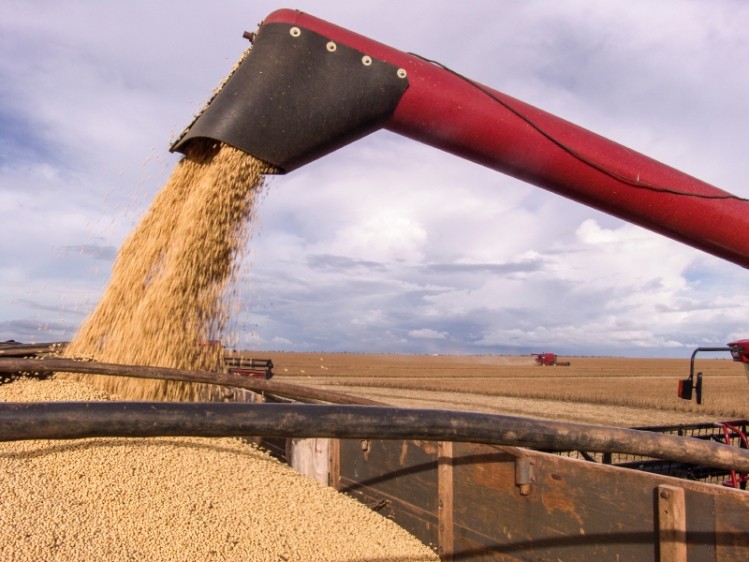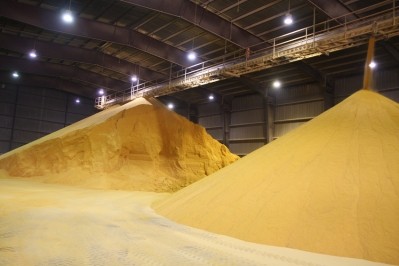US feed crop storage capacity, futures market may be at odds

However, outdoor storage also may lead to some loss of feed grains though spoilage, said Tanner Ehmke, senior economist in grains oilseeds ethanol and farm supply with CoBank’s Knowledge Exchange, in a report.
“Grain elevators are anticipating higher returns over last year with demand for grain storage soaring, transportation costs falling, basis firming, and the futures market offering substantial carry for stored grain,” he said. “It’s a promising economic environment for elevator operators.”
Soybean crops, however, are presenting a different picture from corn and wheat, said Ehmke. “The rapid export pace of soybeans amidst continued Chinese demand, and the lack of margin in carrying soybeans versus wheat or corn will continue to discourage storing soybeans despite the carry offered in the futures market,” he added.
Maxing storage capacity
The large feed crop harvest has created a “boon” for commercial grain handlers, said Ehmke. Farmers and commercial elevators reported storage capacity for about 24.1bn bushels at the end of 2015, but the latest crop estimates from the US Department of Agriculture indicate production amounts of 22.4bn bushels for crops including corn, wheat, soybeans, oats, barley and sorghum.
“While total storage appears to be sufficient on paper, grain handlers resorted to storing much of this summer’s wheat crop and this fall’s record corn and grain sorghum harvests in ground piles or bunker storage, raising concerns of increased losses to shrink and spoilage and higher costs from duplicate elevations for blending,” he said. As farmers potentially turn to outdoor storage, questions are raised about the quality for crops coming to market in the spring, he added.
Grains being harvested have to compete for space with the wheat crop, said Ehmke. “With an abundance of bushels chasing limited storage space, the value of storage is rising while futures markets are incentivizing storage,” he added
“USDA’s forecast for the highest wheat and corn ending stocks total since the 1987-88 marketing year suggests storage tightness could persist through 2017,” said Ehmke. However, the conditions indicate potential for a strong year for grain and feed elevators.
“US farmers currently are hauling in record sized fall crops of corn, soybeans and grain sorghum, which will compete with the enlarged wheat inventories harvested earlier in the season for storage space,” he said. “While storage space in the US has continually grown each year for the past 10 years, storage shortages have been widespread, particularly across the Western Corn Belt and Central and Southern Plains regions.”
However, strong export interest for soybeans and the lack of margin mean that the feed crop likely will continue to sell rather than be stored, he said.
Export sales
Some exports sales for soybeans are expected to continue for the next few months, but they potentially will face challenges from grain harvests in South America, said Ehmke. “Barring a severe weather disruption in the key soybean exporting countries of Brazil and Argentina, the arrival of the South American soybean crop in March will evaporate the robust soybean export demand the US currently enjoys,” he added.
Wheat’s export demand has been less energetic and may prompt more storage, he said.
“The return of stout export demand for corn and an improved export pace for hard red winter wheat, combined with slow farmer selling, is expected to support basis levels for corn, soybeans and wheat in the weeks and months ahead,” he said.












